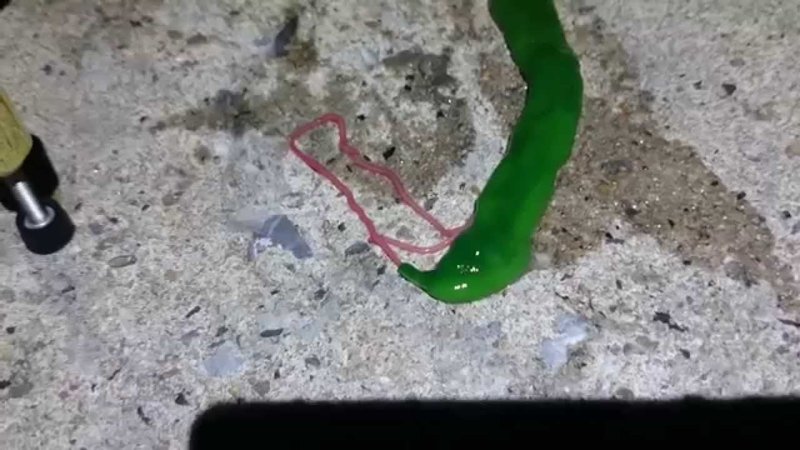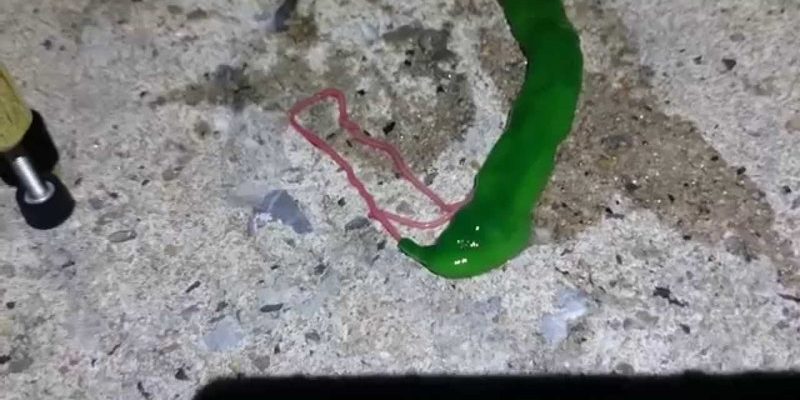
Here’s the thing: ribbon worms are part of a group called nemerteans, and they come in various shapes and sizes. While some can be just a few inches long, others stretch out to a whopping 30 feet! This article explores how ribbon worms use their unique slime, giving you a peek into their world and hunting methods.
What Are Ribbon Worms?
Ribbon worms, or nemerteans, are fascinating creatures found primarily in marine environments. These worms have a unique, elongated body that can vary dramatically in length, often resembling a strand of ribbon—hence the name. They typically inhabit sandy or muddy substrates along coastlines and can also be found in deeper oceanic waters.
One of the most exciting aspects of ribbon worms is their wide variety of colors and patterns. Some may be bright and vivid, while others blend in with the seafloor, making them elusive to both predators and prey. Though they may look simple, there’s a lot more going on beneath the surface, especially when it comes to their hunting methods.
How Do Ribbon Worms Capture Their Prey?
You might be surprised to learn that ribbon worms are not just passive creatures waiting for food to swim by. Instead, they are active hunters with a fascinating method of capturing prey. They rely on a specialized structure called a **proboscis**—a long, tube-like appendage that can extend rapidly to snatch up unsuspecting critters.
When prey, such as small fish or crustaceans, comes within range, the ribbon worm extends its proboscis. But it’s not just the proboscis that does the job; it’s covered in a **sticky slime** that adheres to whatever it touches. This slime acts like a super-strong adhesive, allowing the worm to catch and reel in its prey efficiently.
Once the prey is captured, the ribbon worm can retract its proboscis, tugging its meal back toward its mouth. This remarkable hunting technique is a combination of speed and sticky slime that leaves little chance for escape.
The Science Behind Sticky Slime
The sticky slime produced by ribbon worms is no ordinary goo. It’s a complex secretion that consists of various proteins and polysaccharides. These components work together to create a substance that can adhere to different surfaces, including the slippery bodies of fish and crustaceans.
You might be wondering how this slime is produced. Ribbon worms have specialized glands located along their bodies that release this sticky substance. When they sense potential prey nearby, the glands kick into action, releasing the slime as the proboscis extends.
Interestingly, the slime isn’t just an adhesive; it may also serve other purposes. For example, it could help with locomotion or act as a defense mechanism against predators. This multi-functionality makes the slime one of the most critical aspects of a ribbon worm’s survival.
Prey Preferences: What Do Ribbon Worms Eat?
So, what exactly do ribbon worms like to munch on? Their diet primarily consists of small marine animals, including:
- Cruising amphipods
- Small fish
- Crustaceans like copepods
- Other soft-bodied invertebrates
Ribbon worms are opportunistic feeders, which means they’ll go after whatever looks like an easy meal. Their ability to extend their proboscis and shoot out sticky slime makes it easy for them to catch prey that might be faster or more agile in the water.
Sometimes, you may find them hiding in the sand or mud, waiting for the right moment to strike. This patience pays off, as they can snap up a meal before their prey even knows what hit them.
The Role of Ribbon Worms in Ecosystems
Ribbon worms are not just fascinating creatures; they also play a vital role in their ecosystems. As predators, they help maintain balance within their marine environments by controlling populations of smaller animals.
Here’s a fun thought—imagine a world where ribbon worms didn’t exist. You might have an overabundance of small fish and crustaceans, leading to fierce competition for resources. By keeping these populations in check, ribbon worms contribute to a healthier, more stable ecosystem.
Furthermore, as they consume prey, they also become a food source for larger predators, such as fish and seabirds. In this way, ribbon worms are integral to the food web, connecting various species and helping to sustain marine life.
Interesting Facts About Ribbon Worms
There’s so much more to ribbon worms than their sticky slime and unique hunting techniques. Here are some interesting tidbits:
- Regeneration: Ribbon worms have a remarkable ability to regenerate lost parts of their body, including their proboscis. If they lose it during a hunt, they can grow a new one!
- Color Variations: Some species can change color, likely to communicate or camouflage themselves from predators.
- Size Matters: The largest ribbon worms can grow up to 30 feet long, making them one of the longest worms in the world!
These quirks make ribbon worms an exciting subject of study for scientists and marine enthusiasts alike. Their incredible hunting abilities and unique adaptations continue to inspire curiosity.
Ribbon worms might not be the most well-known predators, but their hunting strategies are nothing short of amazing. With their sticky slime helping them capture prey in a flash, they highlight the complexity of nature and its countless surprises.
The next time you think about the animal kingdom, remember the ribbon worm and its remarkable way of thriving in the marine world. Whether you’re a budding marine biologist or just someone who appreciates the wonders of nature, understanding these creatures can deepen your appreciation for the delicate balance of life underwater. So, here’s to ribbon worms—simple yet extraordinary!

